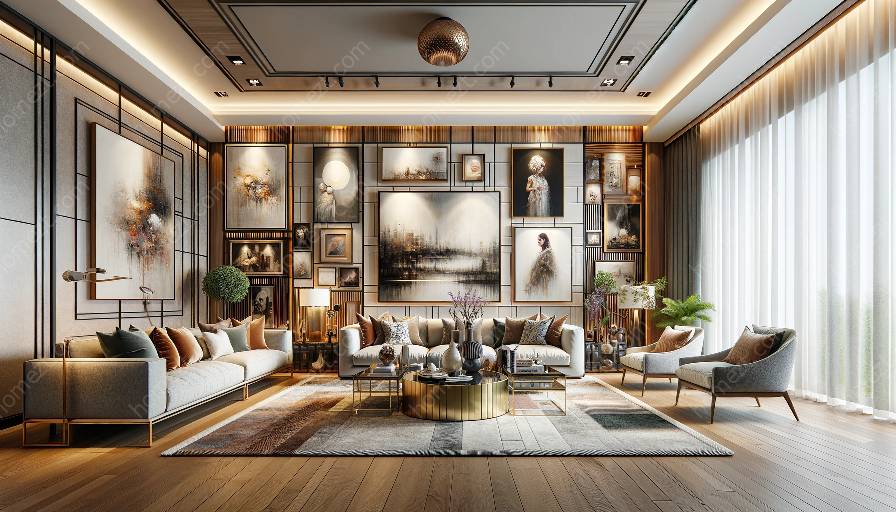Decorating with accessories is a pivotal element in creating a harmonious and stylish living space. By applying best practices for accessory arrangement, you can elevate the aesthetic appeal of your interior decor and create a welcoming and visually impactful environment. In this comprehensive guide, we will explore effective techniques for arranging accessories, integrating art into your decor, and creating a cohesive and attractive living space.
Understanding the Role of Accessories
Accessories play a crucial role in enhancing the overall ambience of a room. They can add personality, color, texture, and visual interest to any space. By strategically arranging accessories, you can create focal points, add depth, and infuse your decor with a sense of individuality and character.
Choosing and Curating Accessories
Before delving into the arrangement process, it's essential to gather a curated collection of accessories that reflect your personal style and complement the existing decor elements. This may include items such as vases, decorative objects, candles, books, and other visually appealing pieces.
Consider the scale, proportion, and visual impact of each accessory to ensure they harmonize with the space without overwhelming it. Mix and match different textures, materials, and shapes to create a layered and visually captivating arrangement.
Creating Balance and Symmetry
Balance and symmetry are fundamental principles when arranging accessories. Utilize these principles to create a sense of visual equilibrium within the space. For example, if you place a large accessory on one side, balance it with a grouping of smaller items on the opposite side to maintain harmony.
Symmetry can be achieved by placing similar accessories in pairs or using a symmetrical layout to create a cohesive and balanced arrangement. However, asymmetry can also create visual interest and dynamism, so don't be afraid to experiment with different arrangements.
Layering and Grouping Accessories
Layering accessories involves creating depth and dimension within your decor. This can be achieved by placing items at varying heights and depths to add visual interest. Consider utilizing shelves, mantels, or tables to create layered arrangements that draw the eye and invite exploration.
Grouping accessories with similar characteristics, such as color, texture, or theme, can create a cohesive and impactful display. Experiment with different groupings and consider the negative space between items to ensure a balanced and visually appealing composition.
Integrating Art into Accessory Arrangements
Art can serve as a focal point or a unifying element in accessory arrangements. When incorporating art into your decor, consider the scale of the artwork in relation to the surrounding accessories. A large piece of art can anchor the arrangement, while smaller pieces can be used to complement and enhance the overall presentation.
Allow the art to guide the arrangement of accessories around it, creating a harmonious relationship between the artwork and the surrounding decorative elements. Consider the color palette, style, and theme of the artwork when selecting and arranging accessories to ensure a cohesive and complementary display.
Accessorizing Different Spaces
Each room or area within your home presents unique opportunities for accessory arrangement. Consider the specific function and ambiance of the space when selecting and arranging accessories. For example, living rooms may benefit from bold and eye-catching accessories, while bedrooms can be adorned with more intimate and soothing decorative elements.
When decorating with accessories in different spaces, maintain a cohesive design language while tailoring the arrangement to suit the specific character and purpose of the area.
Maintaining Visual Cohesion
Visual cohesion is essential in ensuring all the elements within a space work harmoniously together. Pay attention to color schemes, visual weight, and the interplay of textures and materials to create a cohesive and visually appealing arrangement.
Consider the overall aesthetic of the room and aim to create a sense of unity and balance through your accessory arrangements. This may involve editing and refining your display to maintain visual coherence and prevent overcrowding and visual clutter.
Conclusion
By applying the best practices for accessory arrangement, you can elevate the visual impact of your decor and create inviting and stylish living spaces. Explore the creative potential of accessories in enhancing your home and integrating art into your decorative arrangements for a captivating and personalized environment.






































